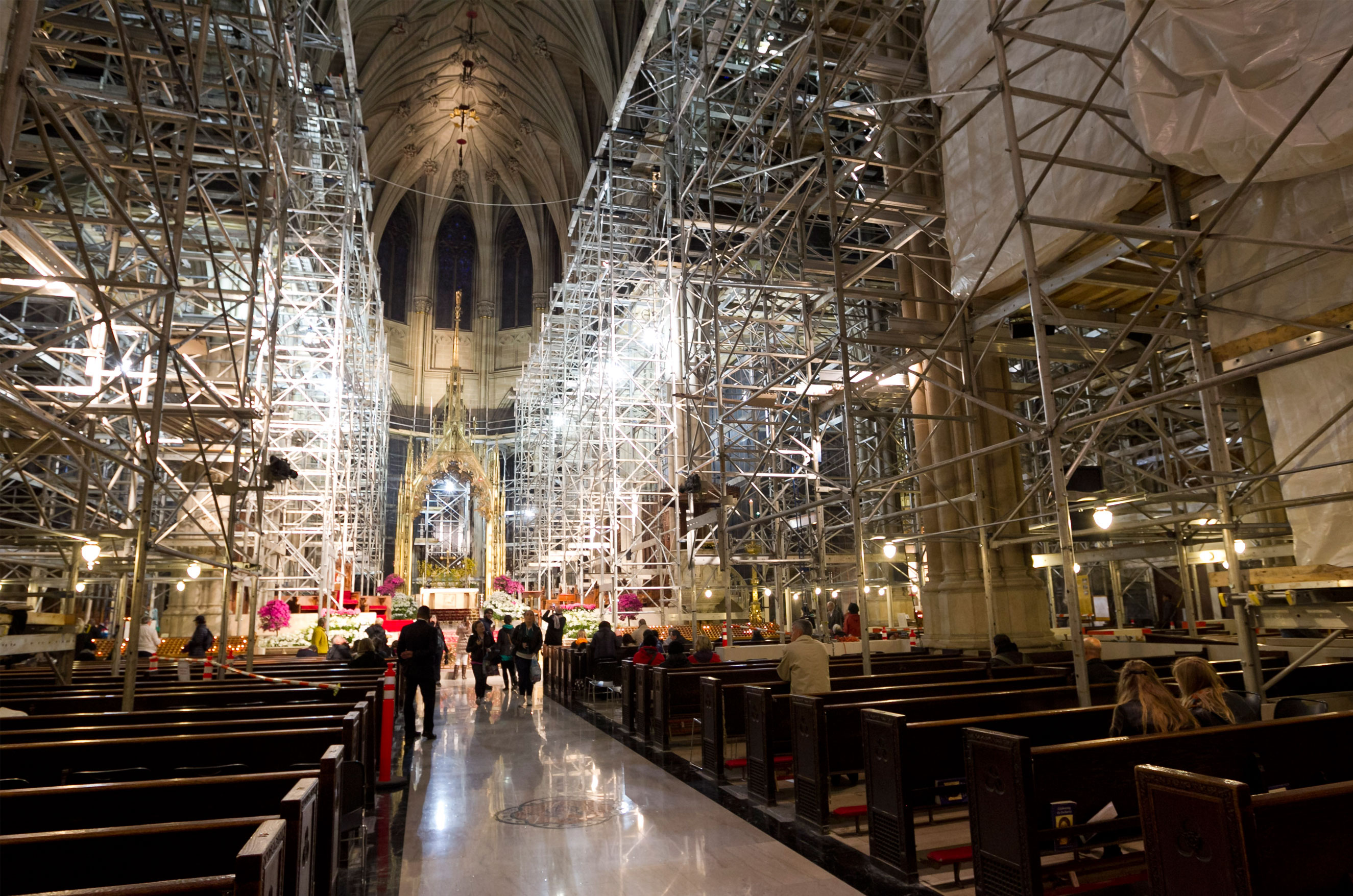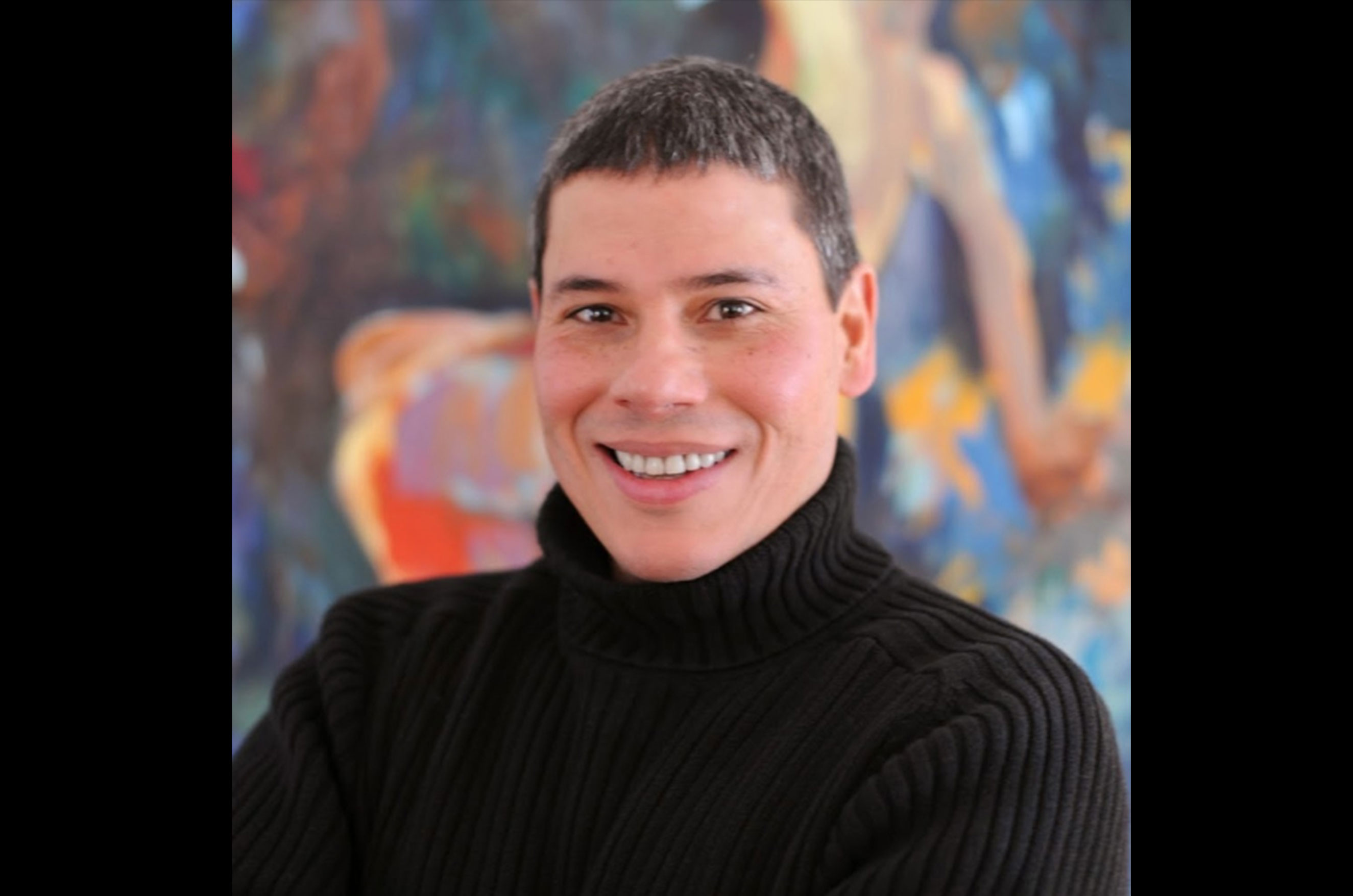Alumni Q+A: Rolando A. Kraeher MArch ’95
As the GSD community grows increasingly diverse, with more than 40% of our current enrollment from outside the U.S., it is not surprising that our alumni cohort reflects a similarly international base. While Rolando A. Kraeher MArch ’95 may be emblematic of this cohort, his story is hardly typical.
One of 5 children of a Swiss-French father and a Salvadorian mother, Rolando was born and raised in his mother’s home country of El Salvador. After completing his final year at a K-12 German day school, he came to the U.S. to attend Texas A&M University where he pursued an undergraduate degree in Chemical Engineering with studies in philosophy and mathematics. Upon graduation he enrolled in the Environmental Design program at Texas A&M University, before moving on to the GSD, where he received a Master’s degree in architecture.
Rolando was recently featured in a CBS News article and an NPR interview about the renovation of St. Patrick’s Cathedral in New York. As Project Architect for Murphy Burnham & Buttrick, he spent the past several years focused on various restoration projects at the church, in addition to working on a new parish house, and a geothermal system at the cathedral. Rolando’s answers to the questions that follow reveal an impressive journey, and an inspired future.
When did you realize you would be architect?
One year prior to finishing my chemical engineering degree, I realized that I did not want to become an engineer. I really liked the courses, but did not want to spend my life designing chemical plants. I left the engineering department and took courses in painting, philosophy, sculpture, photography and architecture for about 18 months. It was then I decided to become an architect. During that time I also met Peter Eisenman who greatly inspired me. I went back to finish my degree in engineering, since I was so close, and then enrolled in architecture.
Why did you choose the GSD?
I looked at various schools, including Yale, SCI-Arc, Columbia, and Harvard. The GSD seemed very interested in nurturing the individual, regardless of what their point of view was in architecture. That really appealed to me, and that is what I actually experienced while there. I was accepted into the Advancement Placement program, which allowed me to take courses in other fields as well as doctoral classes with Michael Hays, since I did not have to take the basic structural and mechanical courses required.
Tell us about your professional career.
I came to New York, after spending some time working in Boston with Kallmann McKinnell & Wood, to join Peter Eisenman’s studio. I left Eisenman’s office after about three years to work with Skidmore Owings & Merrill, also in New York. Eventually, I joined Murphy Burnham & Buttrick to work on high-end residences, schools and institutions like St. Patrick’s Cathedral, which is the project that took most of my time in the office. Today, I continue to consult for Murphy Burnham & Buttrick on all the St. Patrick’s Cathedral projects. I also have my own office, Studio Kraeher Architects, concentrating on institutional work as well as commercial, high-end residential and Passive House design.
What’s your greatest professional achievement?
Working on a unique building like St. Patrick’s Cathedral has been amazing. I feel my greatest achievement is when I can take a program, or building that I know nothing about and create a space that is exactly what is required. This is done obviously through a lot of research, which is something I do a lot of as an architect.
Who or what inspires you?
I would say that Peter Eisenman was the first architect who inspired me and made me look at architecture in a very different way – not only about building, but about space making that included the immediate surroundings. In the architecture that I practice, I include not only the immediate surroundings, but the culture where it is set.
Doyou have a design philosophy? How has it evolved over time?
I believe that architecture is an integral part of humanity’s well being. Our built environment affects us in ways that we are not always aware of. I believe that building design affects how individuals relate to themselves, their surroundings and one another. I like to design buildings and spaces that complement the environment, enhance experiences and elevate the human spirit. I like to create buildings that emerge amid the characteristics of their specific place, surroundings, landscape, habitat, urban condition, history, tradition and culture.
I started by manipulating figure/ground or specific site characteristics that help the design process – more like Eisenman operates. My design process has evolved to be more sophisticated and complex whereby many aspects of the specificity of the site and locale started to be included.
Have there been any significant life experiences that influence your work?
I really have been involved in construction since childhood. My grandparents owned a lot of property, which was constantly being renovated or repaired. I remember the smell of concrete from my childhood which to this day is very much part of me.
Tell us about your work/life balance? What occupies you when you are not working?
When I am not working I spend a lot of time with my wife and six-year-old son. In the summer time, we spend a lot of time visiting and surfing in El Salvador, water skiing, boating, and hiking in the Adirondacks, and in the winter, snow skiing. Recently I also got back into the practice of Martial Arts, which is a passion of mine.
What would surprise us about you?
Maybe that I have travelled to every continent in the world, and that I have lived in different places in Europe and the Americas. That I speak five languages. That I come from a third world country where literacy is less than 15%, yet I was able to carve my path to be where I am today. Probably most of all that I will be dressing as a Star Wars Storm Trooper for Halloween and will go trick or treating with my son (Yoda) and my wife (Darth Vader).
Was there anyone at the GSD that had great influence on you?
Michael Hays, Scott Cohen, and Jorge Silvetti had a deep influence in me, all three from a very different perspective.
What is the most significant thing you learned while at the GSD? What advice do you have for GSD students?
The importance of sharing and learning from others and making lifelong friendships and connections. The people you meet become your consultants, clients, and peers.
Do what feels right, follow your instincts, and do not get caught up on trends.



